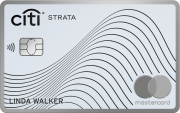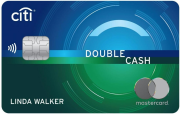The content on this page is accurate as of the posting date; however, some of the offers mentioned may have expired.

Most undergraduate college students wind up with two things when they finish school: a diploma and a small mountain of debt. The typical student graduates with a debt of $18,900 - which is 66 percent higher than five years ago, reports loan provider Nellie Mae.
While the bulk of this is because of student loans, a growing part of this debt stems from unrestrained credit card use, according to Ray Martin, a financial advisor with The Early Show.
College students are prime targets for credit card companies, which market their services on 1,200 college campuses daily, according to the National Consumer Council. They entice students with T-shirts, mugs and other incentives in exchange for filling out their applications. Many students eagerly apply for credit and use it unwisely.
From the time they start college until they graduate, students double their credit card debt and triple the number of cards in their wallets, according to Nellie Mae. Here's another scary thought: by the time college students reach their senior year, 31 percent carry a balance of $3,000 to $7,000.
Understanding Credit Cards
Contrary to what many college students would like to believe, credit cards don't give you "free" money. They simply change the way you pay. In fact, using a credit card is like getting a flexible, short-term loan. Whenever you purchase an item with your credit card, you basically borrow money from the credit card companies and repay it when the bill comes in later.
Some students confuse credit cards with debit cards. These cards look and feel just like credit cards - except they operate in a completely different way. But when you use a debit card to pay for purchases - by signing your name or using your personal identification number (PIN) - the money is transferred immediately from your bank account to the store's account. You can also use a debit card to withdraw cash, make deposits, or transfer funds between accounts.
The Pros and Cons of Credit Card Use
Credit cards are extremely convenient and useful financial tools - if properly used. They allow you to purchase goods and services worldwide quickly and easily, in person, over the phone, or online. Plus, they add to your personal safety by letting you limit the amount of cash you carry. In addition, a credit card helps protect your assets. If your card is lost or stolen, you can simply report it to the credit card company. The company will then deactivate the card, so it can't be abused by others and will issue you a new one. However, if you lose cash - it's gone.
On the other hand, credit cards can to be expensive and hard to control - especially for young students who may not fully realize the seriousness of paying the monthly bill. If they are late making payments, the credit card company adds a late fee, usually from $15 to $35, and interest charges onto the purchase amount. Therefore, it's important for young adults to understand that using credit to extend income to pay for things you can't afford will only increase your debt. Such constant credit card abuse leads to unmanageable debt and financial crisis.
An Important Tool for Establishing Credit History
Using credit cards is an important way to establish your credit history - good or bad credit. Your credit history is important because it's one of the main factors lenders consider when approving you for a loan. Most lenders use your credit history to quickly and often automatically judge if you're a good investment. If you have a bad or nonexistent credit history, you'll have a harder time qualifying for loans at lower interest rates - or at all.
Different factors in your credit report can impact your credit scores, including your repayment history, amount of credit allowed, the highest balance and borrowing patterns. To build a good credit history, you need to use your credit responsibly by paying your bills on time.
Credit Card Fees
There are a number of costs involved with using credit cards. For example, the annual percentage rate (APR) is the cost of credit for not paying your payment in full on time. The higher your APR, the more you'll pay in finance charges if you do not pay your payment in full on time. For example, an APR of 17% doesn't mean you're paying 17% every month. It is what you would pay over the course of a year. APR can either be "fixed" or "variable". Fixed-rate APR's are usually a little higher, but you know exactly how much you will be charged each month. A variable or floating rate will fluctuate based on a published index. Your rate may also change as described in your Cardmember Agreement or with written notice from the card company.
Credit card issuers may also charge an annual membership fee - although this is not typical with student cards. Those with good credit history will most likely also qualify for $0 Annual Fee offers, but some reward cards (like Frequent Flyer), will generally carry an annual fee of $30 to $100. Transaction and other fees may also apply. For example, most card issuers charge a fee when you request a cash advance, are late making a payment or exceed your credit limit.
Tips For Wisely Using Your Credit Card
No one is saying you should avoid using credit cards while you're in college - only that you should do so responsibly. If you're going to use plastic, keep the following advice in mind:
- Use credit only if you're certain you will be able to repay the debt.
- Avoid impulse shopping on your credit card.
- Save your credit card for a money emergency.
- Carry only the cards you think you'll use.
- Pay bills promptly to keep finance and other charges to a minimum.
For more information about responsible credit card use, visit the Federal Trade Commission's Website at www.ftc.gov.





